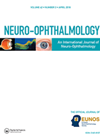
Journal Reviews
Fusion vergence measures
The purpose of this study was to compare fusional vergence measurements between orthophoria, esophoria and exophoria and determine the strength of correlation between fusional vergence and angle of deviation. This was a cross-section study of 530 children aged six to...
Systematic review on vergence neural pathways
A full systematic review of the literature was carried out by the authors, to identify literature available on vergence neural pathways and associated disorders. The review included articles related to vergence neural pathways, along with articles that discussed the anatomy,...
PALs use for convergence excess esotropia
This retrospective study includes a disparate group of 39 esotropic patients with an accommodative element from two different clinics with differing prescribing practices. Seven children were excluded due to previous treatment or insufficient follow-up. In all patients single vision glasses...
Stimulus type vs. convergence measures
The aim of this study was to investigate if near point of convergence (NPC) would improve when a fixation target with centrally placed 3-D features (to increase binocular disparity stimulus) was used in comparison to a target using only centrally...
Iranian prevalence of convergence / accommodative disorders
The aim of this study was to investigate the frequency of accommodative and convergence disorders in an optometric clinical population and ascertain tests with the highest sensitivity and specificity in detecting these anomalies. The authors gathered information on symptoms, near...
Association of asthenopia and heterophoria
Heterophoria varies over time and asthenopic symptoms may be greater when the heterophoria is larger. Thus a close intra-individual correlation may exist between heterophoria and discomfort during reading. The authors investigated the variability of both parameters in 20 individuals who...
A case report of bidirectional aberrant upward eye movement
The authors present a case report of a 14-year-old boy with left ptosis and strabismus since childhood. In primary position he had left hypotropia with ptosis. On elevation of the right eye, the left eye depresses and adducts. Conversely, on...
Dyslexic reading improved by vergence training
The aim of this study was to evaluate if reading performance could be improved by a period of compensatory vergence training in dyslexic children with otherwise normal binocular vision. The study included 13 children with dyslexia – mean age of...
Glasses or not?
In this excellent review article, the authors discuss how some hyperopes avoid strabismus but also ask why the youngest infants escape strabismus and older patients go on to decompensate. The review considers a number of related aspects and their inter-relations...












